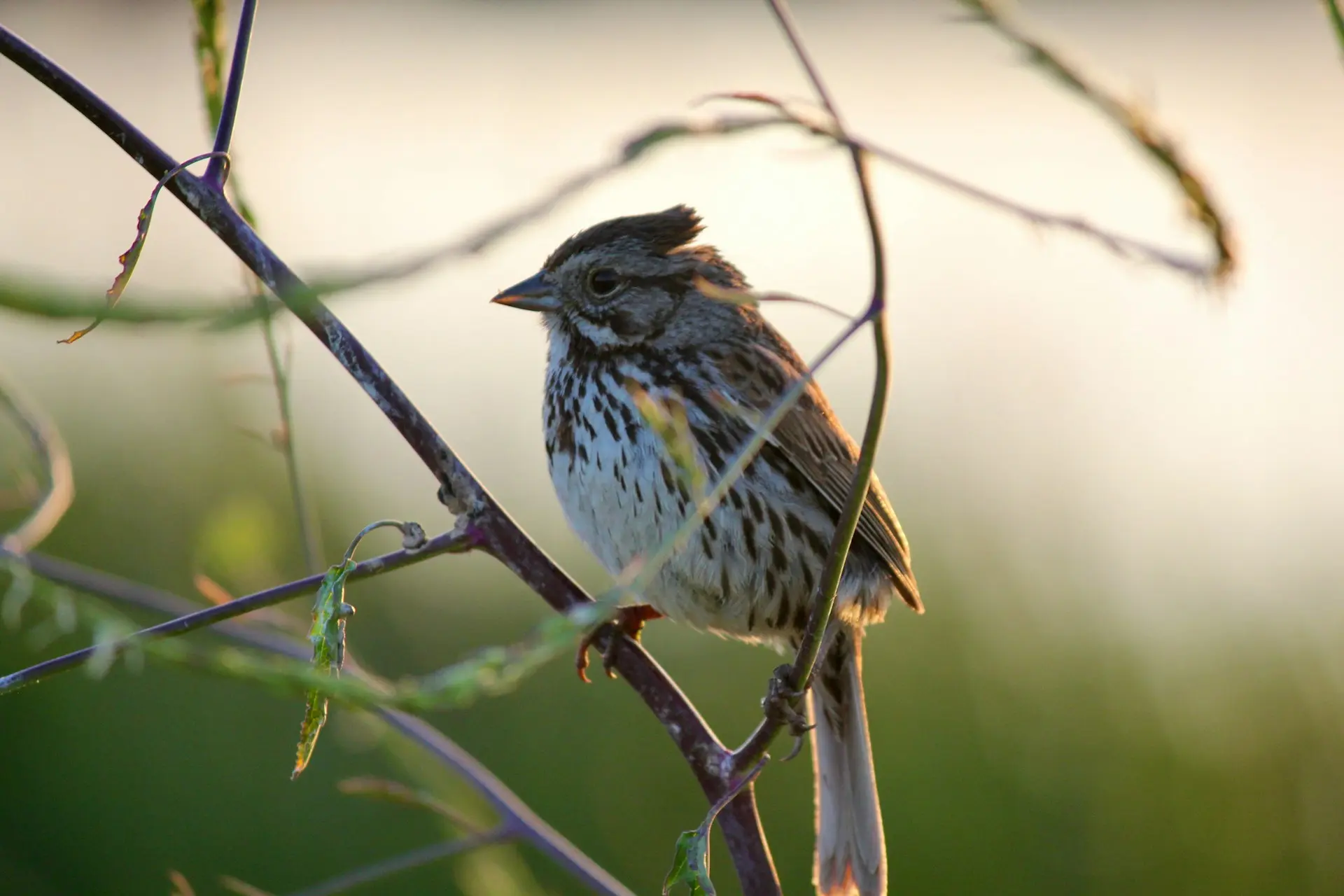Birding, or bird watching, is a rewarding hobby that combines the excitement of outdoor exploration with the thrill of discovering the natural world and offers a unique blend of relaxation, education, and adventure. In this article, I will delve into the joys of bird watching, its benefits, and how to get started.
The Appeal of Birding
Birding appeals to people for various reasons. It can be a peaceful, meditative activity, allowing you to connect with nature and escape the hustle and bustle of daily life. For others, it’s the excitement of spotting a rare or elusive species. Birding also fosters a sense of community, as enthusiasts often share their experiences and findings with others.
I have recently started bird watching after one of my neighbors introduced me to the Merlin Bird ID mobile app. I use the app to detect birds in my surroundings and then try to spot them using my binoculars. I find this intentional hearing of birds chirping and hopping on trees in their natural habitat therapeutic.
Benefits of Bird Watching
1. Connection with Nature
Bird watching encourages spending time outdoors, promoting a deeper connection with the natural environment. This immersion in nature has been shown to reduce stress, improve mood, and enhance overall well-being. And for a person like me, finding a reason to get outdoors is always welcomed.
2. Physical Activity
Birding often involves walking or hiking, which can be a great form of exercise. Even gentle strolls in local parks or nature reserves can contribute to a more active lifestyle. Having said that, to get started, you do not need to plan an extensive hike unless you are physically fit and motivated enough to spot an elusive bird that can only be spotted in tough-to-reach locations. If you live in a suburban or semi-suburban environment, you will find plenty of birds to pique your interest.
3. Mental Stimulation
Identifying different bird species and learning about their behaviors and habitats provides mental stimulation and challenges. Bird watchers often develop sharp observational skills and a keen attention to detail. In my experience, the act of being still and observing a beautiful living being in their natural habitat slows you down and make you become more present. Even though on majority you only get a few seconds to mins to observe a bird on a tree branch before they fly off. The excitement and alertness stimulates your brain in a profound manner.
4. Social Interaction
Birding can be a solitary activity, but it also offers opportunities for social interaction. Many communities have bird-watching clubs and groups where enthusiasts can share knowledge, go on group outings, and participate in bird counts and conservation projects.
I have not joined any clubs or groups so far. However, my friend and I often discuss it, which gives us one more topic of mutual interest. My kids also find it fascinating to learn about the birds that they hear in the environment and spot them with their little binoculars. This also gives me one more topic to talk about with them and an excuse to take them outdoors, away from the screens.
Getting Started with Bird Watching
1. Essential Gear
To begin birding, you don’t need much. However, a few essentials can enhance the experience:
- Binoculars: A good pair of binoculars is crucial for getting a close-up view of birds. However, as with any other hobby, there is a rabbit hole to go down when choosing a pair of binoculars. Therefore, when you are starting, any binoculars bought from an outdoor/sports activity store that is not in the toy category should work. In 2021, I bought Celestron LanScout 10 X 50 Porro Binoculars during an REI sale for a mere $25. This particular model is discontinued, but you can find similar models on Celestron’s website for under $50.
- Field Guide: A field guide helps identify different species. Many excellent guides are available in print and as mobile apps. The Merlin Bird ID app is one of them. It’s based on a machine learning-based algorithm that is trained to detect thousands of birds based on their voices and images from around the world.
- Notebook: Journaling your sightings can be a fun and useful way to track your progress and observations. Apps like Merlin will record the date, time, and voices of the birds that they have detected. However, you may not be able to spot all the detected birds with your binoculars. Therefore, keeping a separate journal to note the birds that you have actually seen might be helpful.
- Camera: A camera with a good zoom lens can capture memorable sightings and help with identification later.
2. Choosing a Location
Birds can be found almost anywhere, from urban parks to remote forests. Start by exploring local parks, nature reserves, or even your backyard. As you gain experience, you might venture to birding hotspots known for their diverse species. My first spotting was in my apartment building’s courtyard. Now, I tend to club birding with my fishing trips. I usually fish on lakes which are surrounded by forests. So, while I am waiting for a fish to take my bait I pull out my phone to first detect the birds around me so that I can see their photos and then try to spot them using my binoculars. Camping destinations are also good locations for birding.
3. Learning Bird Identification
Learning to identify birds takes time and practice. Start with common species in your area and gradually expand your knowledge. Pay attention to distinctive features such as size, color, shape, and behavior. Listening to bird calls and songs can also be a helpful tool for identification.
With my current experience, it will take me some time to be better at it, if not master. However, recently, I was able to detect Blue Jay, House, and Song Sparrows around my workplace just by hearing them.
4. Join a Community
Joining a birding club or group can enhance your experience. These communities offer a wealth of knowledge and opportunities to learn from more experienced birders. They also organize events such as bird counts, guided walks, and workshops.
Birding Etiquette and Conservation
Respecting birds and their habitats is essential. Follow these guidelines to ensure a positive impact on the environment:
- Keep a Respectful Distance: Avoid disturbing birds, especially during nesting season.
- Stay on Trails: Protect natural habitats by staying on designated paths and trails.
- Minimize Noise: Keep noise levels low to avoid scaring birds away.
- Support Conservation: Participate in citizen science projects, support bird conservation organizations, and advocate for the protection of natural habitats.
Advanced Birding
I myself am not there yet, but I can envision as I become more experienced, I may want to delve deeper into the world of birding. This could involve:
- Traveling: Visiting different regions to observe a wider variety of species.
- Photography: Investing in better equipment to capture stunning images of birds.
- Conservation Efforts: Getting involved in bird conservation projects and advocacy.
Conclusion
Bird watching is a hobby that offers endless rewards. It provides a way to connect with nature, stay physically active, and engage in a mentally stimulating pursuit. Whether you’re watching birds in your backyard or traveling to distant lands in search of rare species, birding is a hobby that can bring joy and fulfillment for a lifetime. So grab your binoculars, step outside, and start discovering the fascinating world of birds.


Leave a Reply
You must be logged in to post a comment.